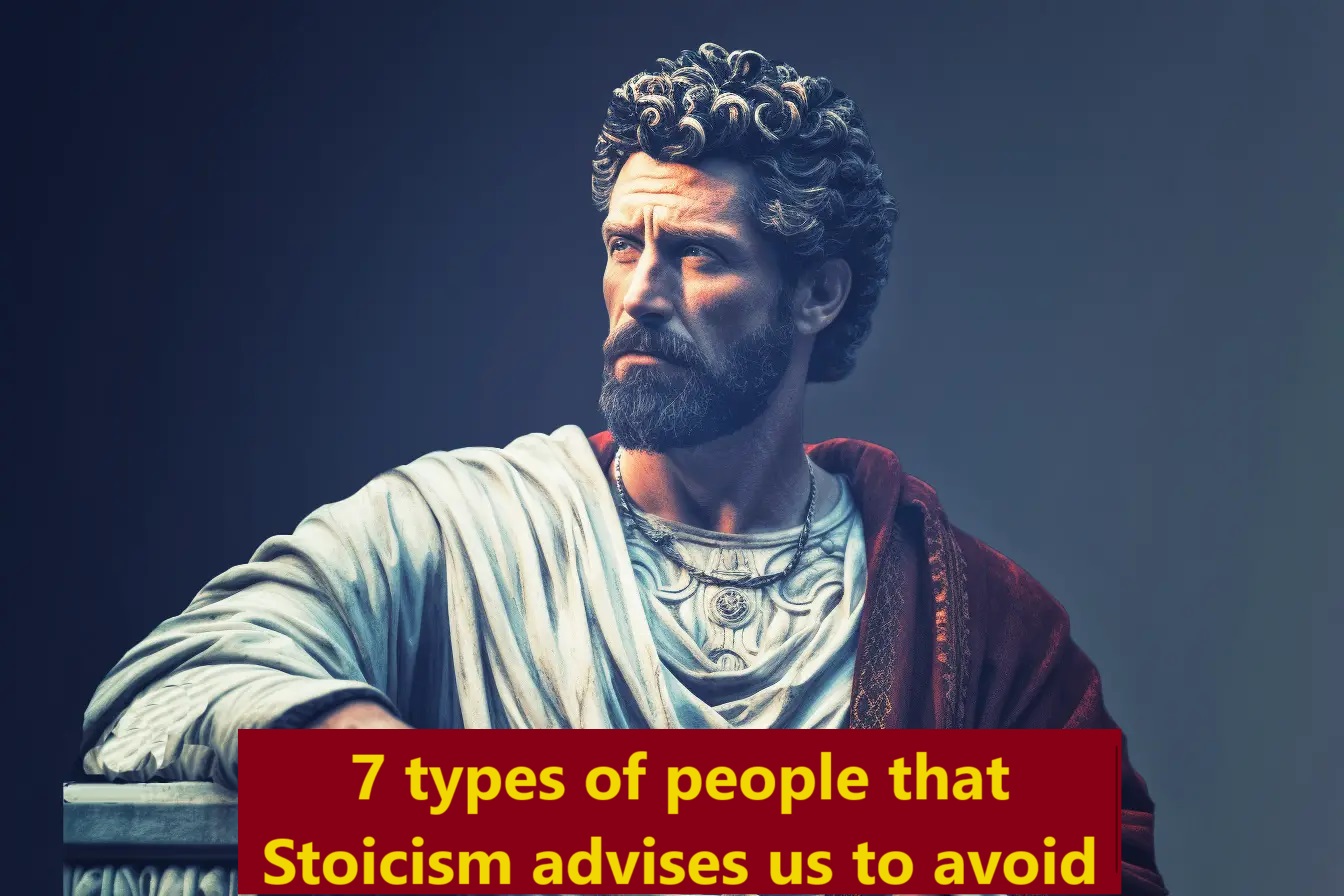Stoicism is a philosophy that emphasizes the importance of virtue, reason, and living in harmony with nature. Stoics believe that by focusing on what we can control, and accepting what we cannot, we can live happier and more fulfilling lives.
According to Stoicism, there are certain types of people who can hinder our progress towards virtue and happiness. These people are often negative, draining, or manipulative. While it is not always possible to avoid these people entirely, Stoics advise us to be aware of their influence and to limit our interactions with them as much as possible.

Here are 7 types of people that Stoicism advises us to avoid:
1. The complainer
Complainers are people who are constantly negative and focus on the problems in their lives. They are quick to blame others for their misfortunes and rarely take responsibility for their own actions. Spending time with complainers can be draining and can lead us to focus on the negative aspects of our own lives.
2. The drama magnet
Drama magnets are people who seem to attract conflict and chaos. They are often involved in petty arguments and disagreements, and they thrive on being the center of attention. Spending time with drama magnets can be stressful and can lead us to get caught up in their problems.
3. The naysayer
Naysayers are people who are always negative and critical. They are quick to point out the flaws in any plan or idea, and they rarely have anything positive to say. Spending time with naysayers can be discouraging and can make us doubt ourselves.
4. The victim
Victims are people who always see themselves as being persecuted or mistreated. They are quick to blame others for their problems and rarely take responsibility for their own actions. Spending time with victims can be draining and can make us feel guilty or responsible for their problems.
5. The toxic positivist
Toxic positivists are people who are always positive, even in the face of adversity. They may seem like they are trying to be helpful, but their positivity can be overwhelming and unrealistic. Spending time with toxic positivists can make us feel like we are not allowed to have negative emotions.
6. The manipulator
Manipulators are people who use others to get what they want. They are often skilled at lying and deception, and they may use guilt or pity to get their way. Spending time with manipulators can be damaging to our self-esteem and can make us feel like we are being taken advantage of.
7. The time vampire
Time vampires are people who are constantly demanding our time and attention. They may be needy or clingy, and they may make us feel like we are obligated to spend time with them. Spending time with time vampires can be draining and can prevent us from focusing on our own needs.
It is important to remember that not everyone who exhibits these behaviors is a bad person. However, if you find that someone is having a negative impact on your life, it may be helpful to limit your interactions with them. By focusing on positive and supportive relationships, you can create a more fulfilling and enjoyable life for yourself.
Ý kiến của bạn